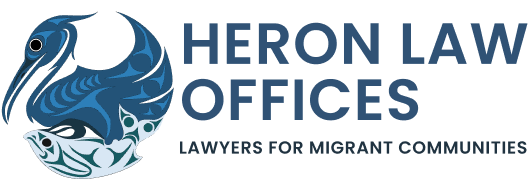








Let’s Get in Touch
Subscribe to Our Newsletter
Stay informed with our latest news and commentary.
Recent Blog Posts
The Time the Korean Church Congregation Came Out to Our Immigration Appeal
Having not blogged on here for awhile (admittedly struggling with writer’s block/half-written blogs – the usual) I wanted to take a short trip down memory
Cautious Concern But Missing Crucial Context – Justice Brown’s Decision in Haghshenas
After the Federal Court’s decision in Ocran v. MCI (Canada) 2022 FC 175. it was almost inevitable that we would be talking again about Chinook. Counsel (including
OPINION: IRCC Should Prioritize Work-Permit Holding Self-Employed/Contractors Seeking PR via Express Entry
As the debate goes on over whether the changes to Express Entry allowing for the Minister of Immigration, Refugees and Citizenship to tweak invitations and
Harvester: Why IRCC is Harvesting Your Submitted Application Documents With Their Latest Automation Tool
We have re-produced IRCC’s Harvester user guide from 2021 below (with additional redactions added to preserve passwords that were likely erroneously disclosed). What
Subscribe to Our Newsletter
Stay informed with our latest news and commentary.
Tags
My Value Proposition
My Canadian immigration/refugee legal practice is based on trust, honesty, hard-work, and communication. I don’t work for you. I work with you.
You know your story best, I help frame it and deal with the deeper workings of the system that you may not understand. I hope to educate you as we work together and empower you.
I aim for that moment in every matter, big or small, when a client tells me that I have become like family to them. This is why I do what I do.
I am a social justice advocate and a BIPOC. I stand with brothers and sisters in the LGBTQ2+ and Indigenous communities. I don’t discriminate based on the income-level of my clients – and open my doors to all. I understand the positions of relative privilege I come from and wish to never impose them on you. At the same time, I also come from vulnerability and can relate to your vulnerable experiences.
I am a fierce proponent of diversity and equality. I want to challenge the racist/prejudiced institutions that still underlie our Canadian democracy and still simmer in deep-ceded mistrusts between cultural communities. I want to shatter those barriers for the next generation – our kids.
I come from humble roots, the product of immigrant parents with an immigrant spouse. I know that my birth in this country does not entitle me to anything here. I am a settler on First Nations land. Reconciliation is not something we can stick on our chests but something we need to open our hearts to. It involves acknowledging wrongdoing for the past but an optimistic hope for the future.
I love my job! I get to help people for a living through some of their most difficult and life-altering times. I am grateful for my work and for my every client.
Awards & Recognition

Canadian Bar Association Founders' Award 2020

Best Canadian Law Blog and Commentary 2019

Best New Canadian Law Blog 2015
Best Lawyers Listed 2019-2021

2023 Clawbies Canadian Law Blog Awards Hall of Fame Inductee

Best Canadian Law Blog and Commentary 2021

Canadian Bar Association Founders' Award 2020

Best Canadian Law Blog and Commentary 2019

